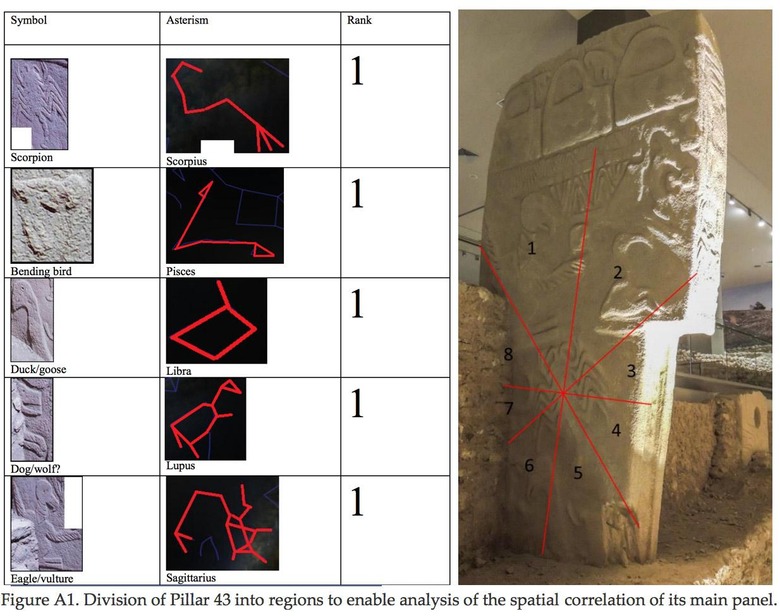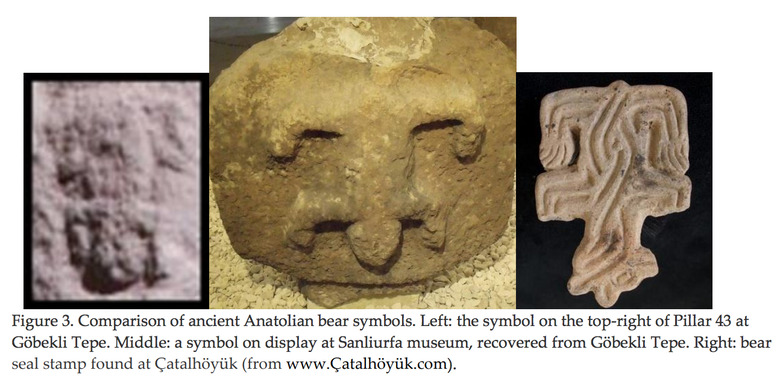Prometheus made real: Constellations found in caves
It's almost like Prometheus was prophesying the findings published today. In the film, researchers discover the same set of symbols depicting a single star constellation in multiple (newly discovered) ancient caves across the planet. In today's study, researchers analyzed already-known archeological sites, finding a set of symbols representing an array of constellations that track to our night sky today.
A number of cave paintings across Europe were revealed to depict representations of astrological symbols in a study published this week. Because of these findings, it's been suggested by researchers from the University of Edinburgh that our common-knowledge history's in need of an update. "These findings support a theory of multiple comet impacts over the course of human development," said study leader Dr Martin Sweatman. "[This data] will probably revolutionize how prehistoric populations are seen."

Once a set of astrological symbols was found in caves and other ancient structures across Europe, these scientists used rabiocarbon testing to place or re-place them in history. They then tracked the movement of the Earth and the probable view that these ancient people had at the time they were carving and/or painting these symbols. If the symbols and their positions did not match up with the constellations as they appeared at the time the symbols were made, these researchers' interpretations would be false.
But, as the radiocarbon dates and the constellation positions of their associated symbols show, the two are well within the bounds of reasonable correlation. The software the researchers used was Stellarium (for archaeoastronomical dating).
Findings appeared on "many of the most well-known archaeological finds in Europe and the Near East," including the following:
• The Lion Man of Hohlenstein-Stadel, southern Germany circa 38,000 BC
• Chauvet, northern Spain circa 34,000 BC
• Lascaux, southern France circa 15,000 BC
• Altamira, northern Spain circa 14,000 BC
• Göbekli Tepe, southern Turkey circa 10,000 BC
• Çatalhöyük, southern Turkey circa 7000 BC
They used such structures as the Vulture Stone at Göbekli Tepe, the animal symbols at Neolithic Çatalhöyük, and Palaeolithic cave art at multiple locations throughout Europe. The paper cites the Aurignacian Lion Man of Hohlenstein-Stadel, Germany, Magdelanean Altamira in northern Spain, and the Shaft Scene at Lascaux, France.

Above you'll see ancient Anatolian bear symbols appearing at three separate ancient locations. One of these alone can be interpreted as many different possible symbols – but when seen together, they become clear.
"Early cave art shows that people had advanced knowledge of the night sky within the last ice age," said Dr Martin Sweatman, of the University of Edinburgh's School of Engineering. "Intellectually, they were hardly any different to us today."
The chances that these symbols, dates, and constellations could match up so perfectly is extremely unlikely. According to the study, "The probability that this zodiac could match by pure chance the radiocarbon dates of Palaeolithic cave art and the 2 shrines at Çatalhöyük is 1 in 150 million." Further, when combined outcomes of all statistical tests on this study are combined, "we find that the probability that all these correlations could have occurred by pure chance is around 1 in 15,000 trillion."
"Therefore," said these researchers, "we have cracked this ancient zodiacal code."
As such, Hipparchus of Ancient Greece is no longer the first to discover effects caused by the gradual shift of the rotational axis of our Earth. Precession of the equinoxes wasn't discovered by Hipparchus around 120 BC, nay! Instead, "this level of astronomical sophistication was actually known at least 36 thousand years earlier."
Break out your history books, it's time to do a few edits.
You can learn more about this subject in a paper authored by Martin B. Sweatman and Alistair Coombs called "Decoding European Palaeolithic art: Extremely ancient knowledge of precession of the equinoxes." This paper was published on November 27th, 2018 in the Athens Journal of History. You can find this paper with code arXiv:1806.00046 [physics.hist-ph] as of this week. This paper was originally submitted by researchers on the 31st of May, 2018.
